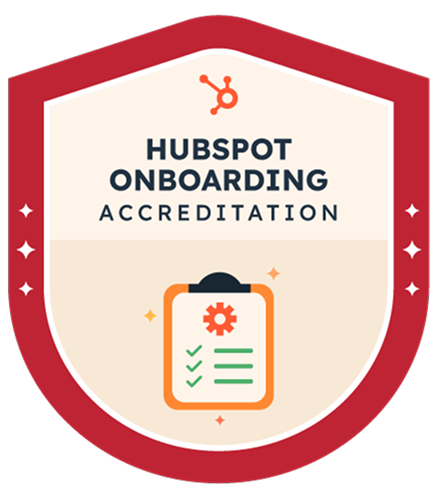You’ve built a successful reputation in your local market. All the hard work is finally paying off - you’re generating a steady pipeline of leads, closing deals, and building brand awareness. Your solution works, which is evident from the number of positive reviews and high customer satisfaction. Locally, you've managed to make a name for yourself.
But lately, you’ve started to notice more and more inquiries from companies abroad and website traffic from international prospects. There is no doubt that this new traffic can significantly enrich your pipeline. You’re beginning to wonder: is it time to also sell to other countries?
Expansion is what occurs naturally alongside growth, and we all dream of reaching a wider customer base. You know your value proposition could benefit companies beyond your borders. You’re ready to take your business global.
You probably have a lot of questions, the first one being: how to start?
What is international marketing?
International marketing (IM) refers to the strategy and execution aimed at expanding marketing efforts to attract audiences outside your domestic market.
As a strategy, it's a high-level plan that outlines how your company will enter, compete, and grow in a foreign market. As execution, it focuses on tactical steps and actions that will bring that strategy to life.
What is the difference between international and global marketing?
The difference between international and global marketing lies in the fact that while a global marketing strategy remains uniform across markets worldwide, international marketing strategies are backed by extensive research, segmentation, and adaptation. How does this work for businesses aiming to target foreign countries?
Let’s say you are a French SaaS platform intending to target the markets of the Benelux countries. Your solution is already established in France - can't you just use the marketing and communication strategy you already have to achieve the same results? It can't be that different, can it?
Many business owners think they can just recycle their current digital marketing strategy to successfully reach their new target market. In truth, it's a bit more complex than that. International marketing requires extensive research that involves a deep understanding of the new market and its demands. Even if you have the best product or service, if you don't account for these demands, your international marketing strategy will not succeed.
So, how do you turn a locally successful marketing strategy into one that resonates with international audiences?
Launching an international marketing campaign for your business: what you need to know
To succeed with international marketing, you need to approach your strategy with clarity and intention. The truth is, many of us underestimate how much of our decisions are shaped by local and cultural factors. What feels natural and intuitive to you might come across as confusing, or even off-putting, to your international client.
A good way to avoid these pitfalls is to follow a checklist to guide your strategy. Once you’ve done the groundwork, you might realize that launching a campaign at an international level isn’t all that different from what you’re already doing at home. The key is in the research - and that’s where your strategy begins.
1. The benefits of market research
Before even considering launching an international marketing campaign, carefully research the local market dynamics of the country you plan to expand to. What is your competition there? Is there a product-market fit? Bear in mind that success in one country doesn’t automatically translate into success in another. Having local market knowledge beforehand ensures you don’t make some costly missteps.
Starting “close to home” doesn’t, in this case, have to mean geographically. It means identifying markets that share similar characteristics in how they can be approached. These are foreign countries where your marketing strategy can be tested, refined, and scaled with minimal operational and financial risk. The goal is to reconfirm the product–market fit through research and real-world experience, before expanding further.
2. Legal compliance and why it's necessary
Once you’ve identified the foreign markets you'll target, the next step is ensuring your business complies with local laws and regulations. These can vary significantly from country to country - ignoring them can not only mean fines or reputational damage, but losing potential customers who expect compliance as a baseline.
Make sure to thoroughly research data protection laws, advertising regulations, or intellectual property laws: whatever is applicable to your product or service. For example, while use of customer data in Europe is regulated by the GDPR, other regions might have their own versions - like the CCPA in California or PDPA in Singapore. Being aware of the legislation beforehand leads to less surprises during the marketing and sales process.
3. The adaptation of your products/services
After making sure your business is legally compliant with the target country, you’ll want to move to the execution of your new marketing strategy itself. It is needless to say that to enter a new market, your current strategy has to be adjusted: adaptation means modifying your messaging and/or branding to fit the target country’s cultural nuances.
Let’s take the French SaaS platform again. As a part of their expansion strategy into the Benelux markets, they might not only change the language or terminology but also offer a different payment model. After careful research, they might find that either monthly subscriptions or one-time payments are what works best for the consumers or users in those markets.
How do you find out what to adjust? Consulting someone from the target country (or hiring a full marketing team) is a good way to know what features you need to tweak to reflect the local needs and values. You might find that it is necessary to switch marketing channels or communicate in a different way. It might be challenging for you at first, but tailoring your strategy to match these preferences will enable your brand to reach your target audience quicker.
4. The localization of your brand
While we can consider localization a part of adaptation, it is a more narrow process that involves customizing content to fit the local language and preferences. The difference? Adaptation means broader product or service adjustments, while localization tends to focus on the language, visuals, and format of the content.
For example, localizing a website for the UK might include:
- translating text into British English,
- changing date formats (dd/mm/yyyy vs. mm/dd/yyyy),
- adjusting images to reflect local customs or preferences (e.g., using local landmarks or people in the visuals).
Localization is a non-negotiable for your international marketing strategy - without it, even the best product can fall flat. Going beyond simple translation, it tailors your content to the cultural and linguistic context of your target audience.
While implementing a one-size-fits-all approach can lead to miscommunication and lack of relevance, a well-localized message will build credibility, trust, and, ultimately, increase conversions.
5. Measuring and optimization
Finally, as with all marketing campaigns, don’t forget to track and optimize.
When you enter new markets, you’re dealing with different customer behaviors, and measuring campaign performance and implementing tools used by marketers like A/B testing helps you understand what works and what doesn’t.
Backed by data and not only haphazard application of marketing principles, your international marketing will turn from guesswork into a strategy.
Know your audience
International marketing shouldn’t be a shot in the dark. Whether you’re expanding into new regions or refining your domestic marketing strategy, understanding how your customers think is key. Our Customer Insights Report gives you the data-driven insights you need to tailor your messaging accordingly.
Request your free Customer Insights Report now.

The SUM Brochure
Discover how we think, work and deliver. Inside, you'll find out how our way of working and the SUM Growth Model helps businesses like yours achieve results and grow predictably.






